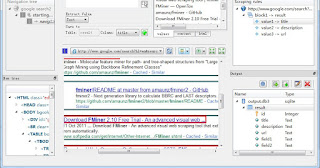



The contention is consistent with some evidence in developmental psychophysics that infants are capable of detecting contours embedded in noise although the use of information on proximity, collinearity, and closure is seen as far beyond their capacity in the development course ( Hadad, Maurer & Lewis, 2010 Hipp et al., 2014 Taylor et al., 2014).

Thus, it remains controversial whether the integration of closed collinear contours necessitates higher level shape perception or a top-down mechanism ( Li & Li, 2015). S-contours) and there existed a separate global closure mechanism underpinned not only by V1 but also higher visual areas like V4, a region responsible for the perception of an object’s shape ( Anitha & Connor, 2002). (2012) argued that a local mechanism did not fully account for the detection advantage of closed over open contour paths (e.g., circles vs. It is widely accepted that proximity and continuation can be implemented physiologically through long-range horizontal connections in the primary visual cortex (V1) ( Gilbert & Li, 2013 Hess, Hayes & Field, 2003 Li & Gilbert, 2002 Li, 1997). The authors suggested that a local mechanism or the interaction of local continuation (i.e., collinearity) and proximity (i.e., distances) mechanisms could induce global perceptual wholes.
#Fminer randomly named element Patch#
Tversky, Geisler & Perry (2004) reported that circles were slightly more detectable than S-contours even if two types contained the same number of elements at the same local patch curvature. Kovács & Julesz (1993) found that the visual system was more sensitive to closed contours in contrast to open contours and attributed the sensibility to a probability computation based on fragments or local features of a contour (bottom-up). Global contour saliency is based on the local integration mechanisms of intermediate spatial extent ( Li & Gilbert, 2002). Contour integration generally declines with increasing spaces between neighboring elements ( Field, Hayes & Hess, 1993 Strother & Alferov, 2014). For example, the space between adjacent contour segments, which is an index to define saliency, is an important low level factor that influences the performance of contour detection ( Strother & Alferov, 2014). Visual contour integration is assumed to vary with low-level features such as color ( Mcilhagga & Mullen, 1996 Mullen, Beaudot & Mcilhagga, 2000), orientation ( Nelson & Frost, 1985), spatial frequency ( Field, Hayes & Hess, 1993), saliency ( Li & Gilbert, 2002), and topology ( Kovács & Julesz, 1993). Our findings support a bi-directional mechanism that low-level sensory features interact with high-level cognitive factors in contour integration.Ĭontour detection and integration are crucial for the visual system to generate a coherent representation of visual objects, especially in complex environments. Only salient circles can be successfully integrated in an unconscious state under low perceptual load although both salient circles and S-contours can be done consciously. These results suggest that conscious awareness plays a pivotal role in coordinating a closure effect with the level of perceptual load. We found that (1) salient circles and S-contours induced different cuing effects under low perceptual load but not with high load (2) no consistent pattern of cuing effects was found for non-salient contours in all the conditions (3) a positive cuing effect was observed for salient circles either consciously or unconsciously while a negative cuing effect occurred for salient S-contours only consciously. Cuing effects were utilized to assess the covert processing of contours prior to a peripheral orientation discrimination task. Attention was manipulated with high or low perceptual load for a foveal go/no-go task. A modified inattentional blindness (IB) combined with the Posner cuing paradigm was adopted in our three-phased experiment (unconscious-training-conscious). In this paper, we investigated how attention modulates contour integration through saliency (different element spacing) and topological propert ies (circle or S-shaped) when the state of conscious awareness is manipulated. Less is known about how low and high level factors interact to influence contour integration. Previous research has documented that contour detection and integration may either be affected by local features such as the distances between elements or by high-level cognitive factors such as attention in our visual system.


 0 kommentar(er)
0 kommentar(er)
